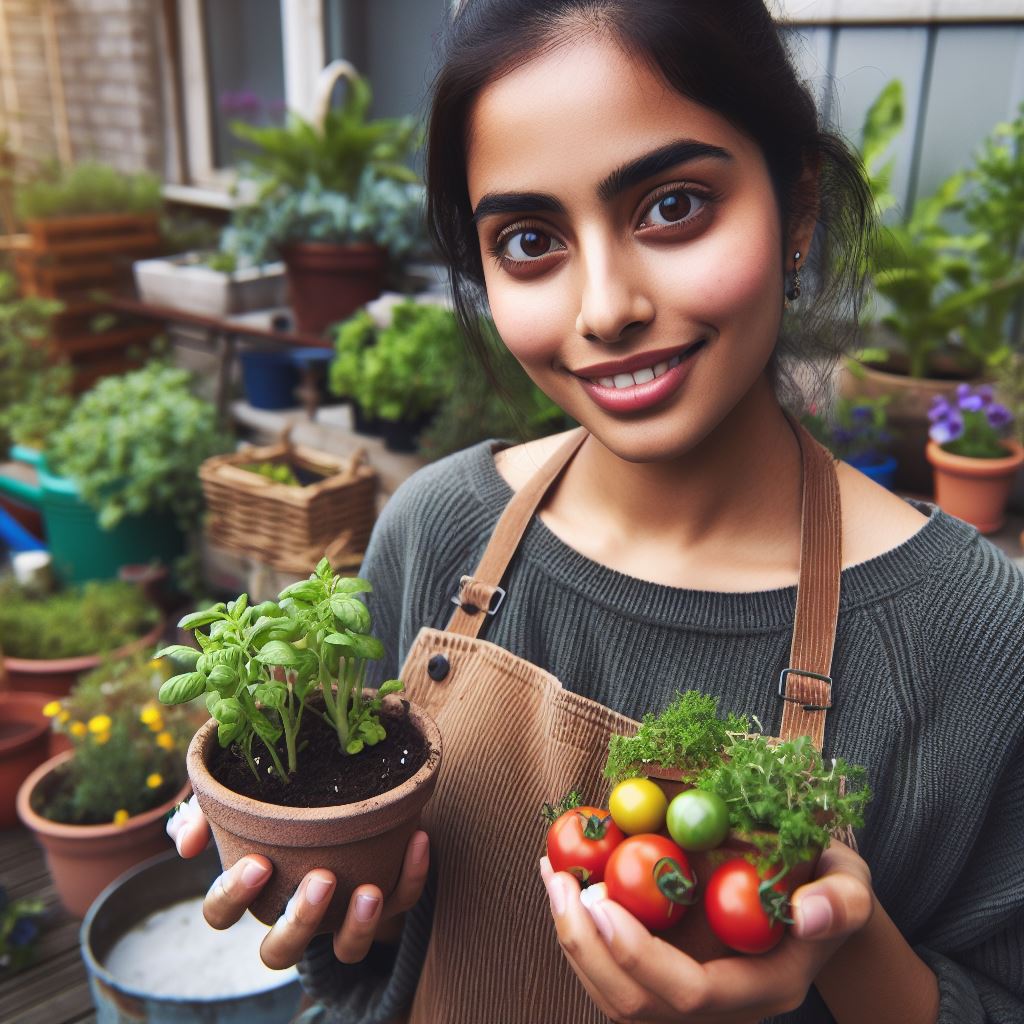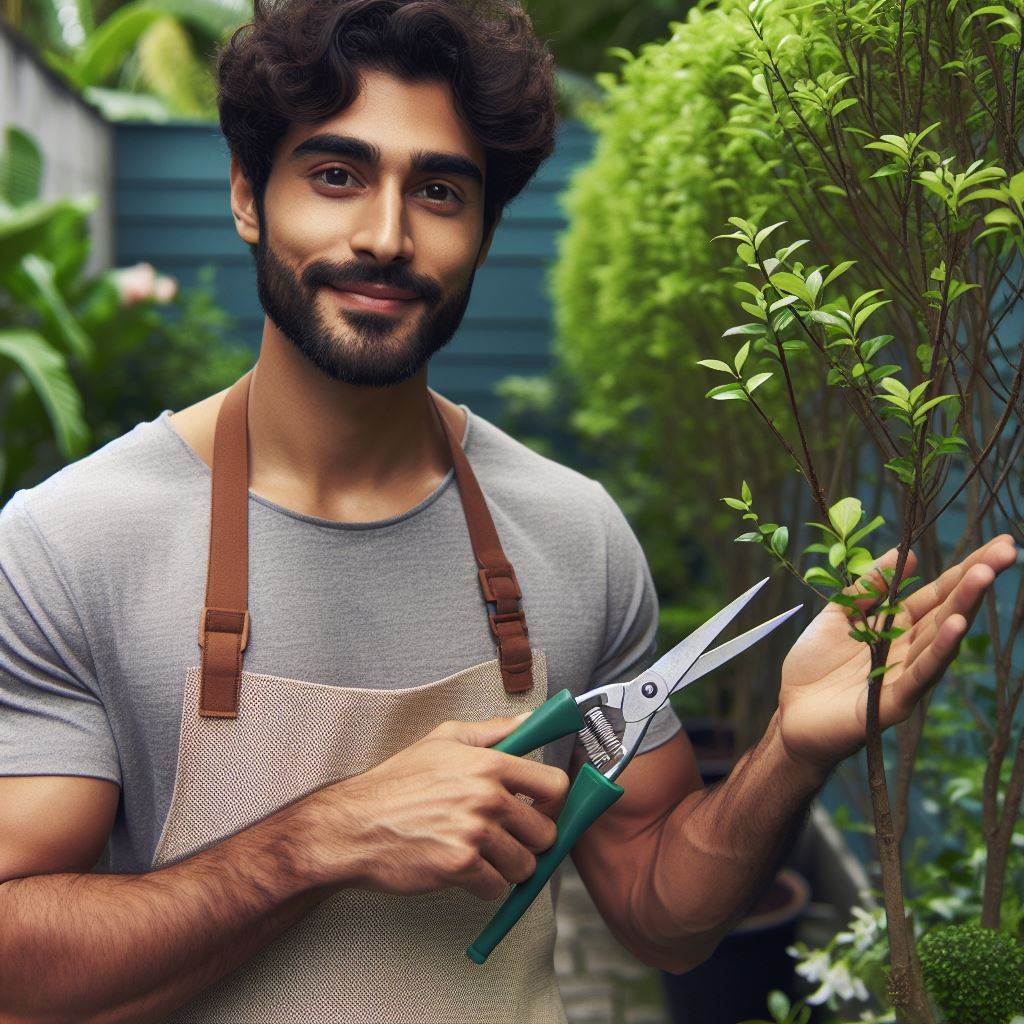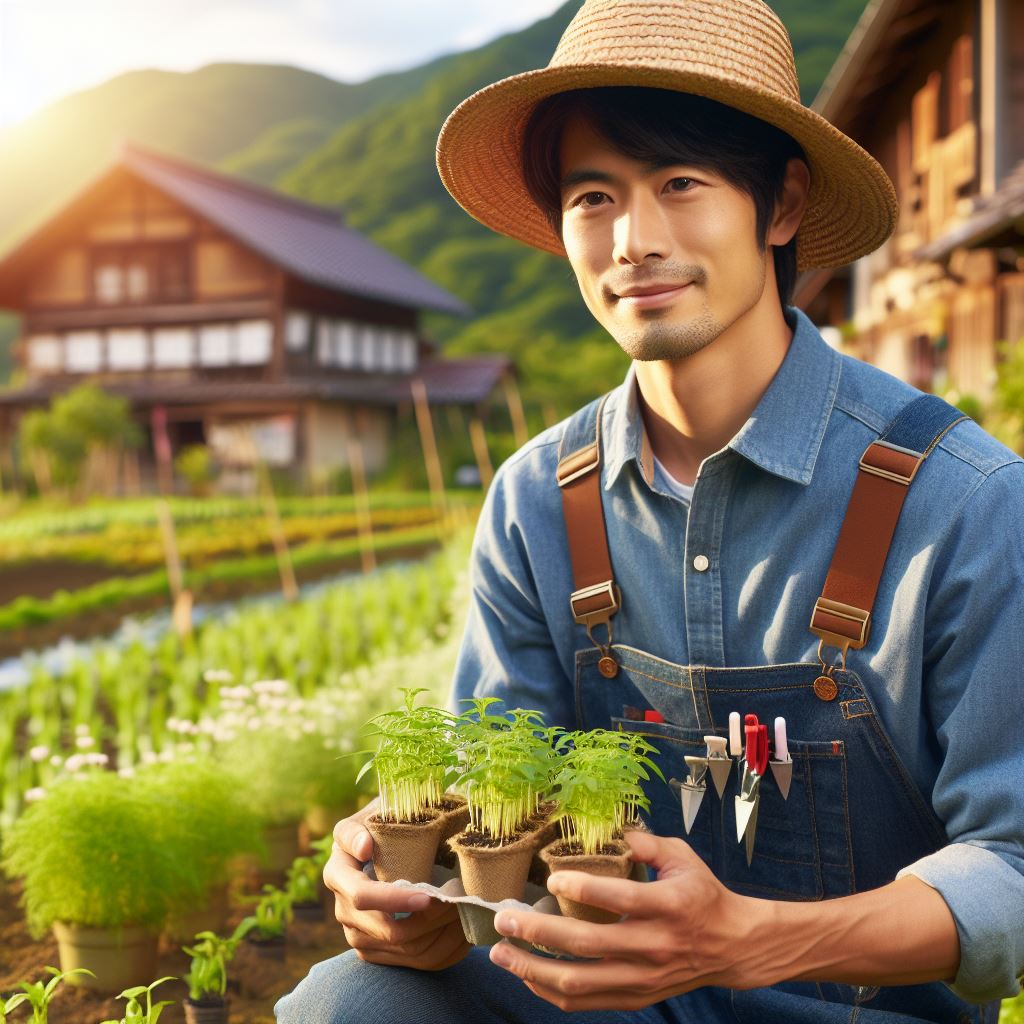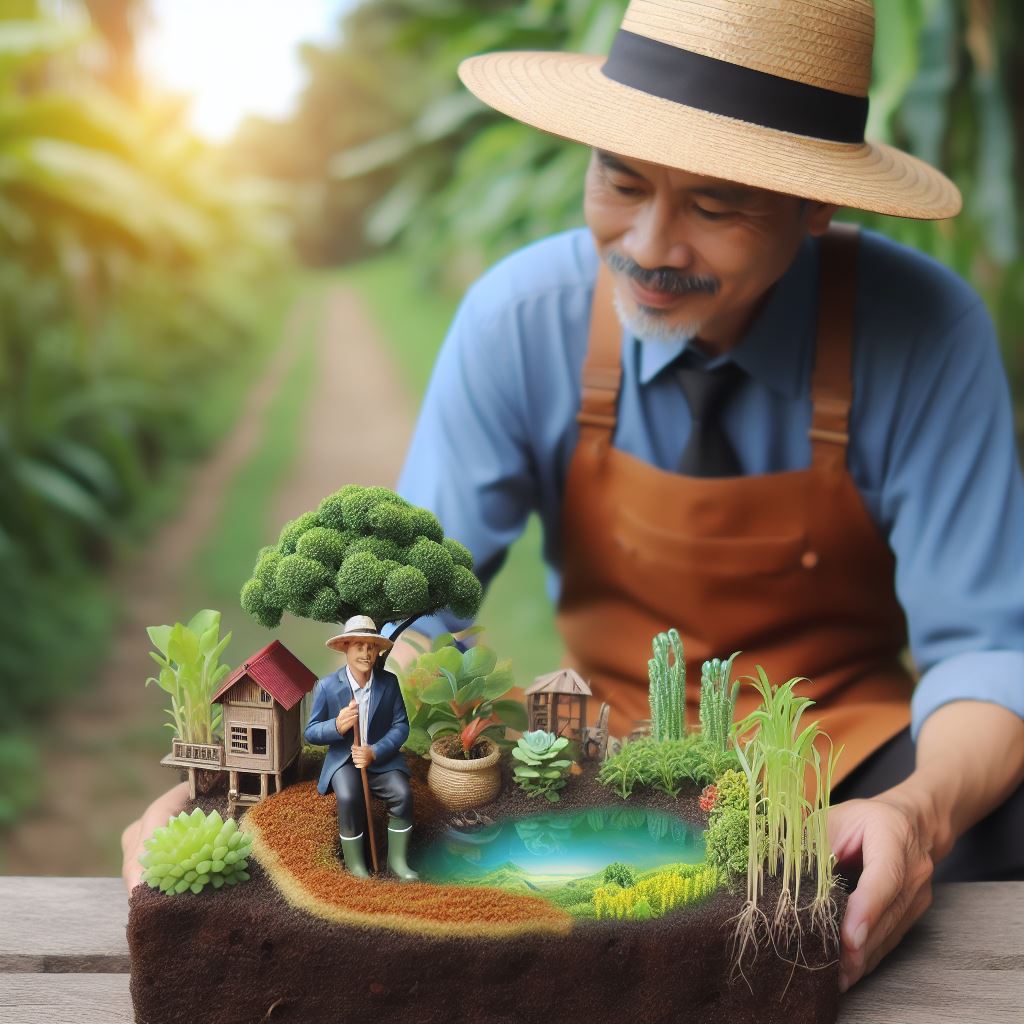Introduction
Urban gardening offers a solution for city dwellers keen on cultivating green spaces.
Maximizing small areas for gardening is essential because:
- Space constraints: Urban environments often lack expansive outdoor areas, making efficient use of available space crucial.
- Food security: Growing your own produce in urban settings promotes self-sufficiency and reduces reliance on store-bought items.
- Environmental benefits: Urban gardens contribute to air purification, biodiversity conservation, and climate resilience in densely populated areas.
- Community engagement: Urban gardening fosters community bonds and social interaction among neighbors, enhancing the overall quality of urban life.
- Health and well-being: Gardening in small spaces offers therapeutic benefits, reducing stress levels and promoting mental and physical well-being.
In this blog post, we will explore practical tips and strategies to maximize small spaces for urban gardening.
Benefits of Urban Gardening
Enhanced access to fresh and nutritious produce
- Urban gardening allows you to grow your own fruits, vegetables, and herbs.
- You have full control over what fertilizers and pesticides are used, ensuring organic and healthy food.
- The proximity of your garden makes it easy to harvest fresh produce whenever you need.
Reduction of environmental footprint
- Urban gardening promotes sustainable practices like composting and rainwater harvesting.
- It reduces the demand for commercially grown produce, which often involves long transportation distances.
- By growing plants, you contribute to cleaner air, reduce pollution and create a greener environment.
Opportunity for stress relief and improved mental health
- Gardening helps you reconnect with nature, providing a sense of tranquility and relaxation.
- Engaging in physical activity while gardening releases endorphins that boost mood and reduce stress.
- Taking care of plants and watching them grow can give a sense of accomplishment and purpose.
Promotion of community engagement and social connections
- Urban gardening brings people together, fostering a sense of community and belonging.
- Community gardens offer opportunities to share experiences, knowledge, and trade surplus produce.
- Engaging in gardening activities with neighbors and friends strengthens social connections and relationships.
Overall, urban gardening offers various benefits that go beyond the limitations of small spaces.
By enhancing access to fresh produce, reducing the environmental footprint, providing stress relief, and promoting community engagement, it has the potential to transform urban living.
So, let’s grab our gardening tools and start maximizing our small spaces for a healthier and more connected lifestyle.
Read: Multipurpose Garden Tools for Efficiency
Assessing Your Space
Evaluating available outdoor spaces (balconies, rooftops, yards, etc.)
- Measure the area on your balcony, rooftop, or yard to determine how much space you have for gardening.
- Consider the weight-bearing capacity of your balcony or rooftop before starting a garden.
- Take into account any restrictions or regulations in your building or neighborhood regarding outdoor gardening.
- Think about the direction and strength of the wind in your outdoor space, as it can affect plant growth.
Considering indoor gardening options (windowsills, vertical gardens, etc.)
- Assess the available windowsills in your home that receive sufficient sunlight for indoor plants.
- Research different types of vertical gardens that can be installed indoors.
- Consider the weight and load-bearing capacity of your walls before setting up a vertical garden.
- Explore other indoor gardening options like hanging planters or floating shelves for space optimization.
Determining sunlight and shade patterns
- Observe the amount of sunlight your outdoor space receives throughout the day.
- Note any areas in your surroundings that may cast shadows and affect sunlight availability.
- Identify which areas receive full sun, partial shade, or full shade to select appropriate plants.
- Use a sunlight meter or consult with a local gardening expert to determine light intensity accurately.
Assessing access to water sources
- Determine the proximity of available water sources such as outdoor faucets or water storage containers.
- Ensure you have a convenient way to transport water to your outdoor gardening area if necessary.
- Consider installing a rainwater harvesting system to make use of natural water resources.
- Check the water quality in your area and its suitability for watering your plants.
Assessing your space is the crucial first step in urban gardening.
Whether you have an outdoor area or limited indoor space, understanding the characteristics of your surroundings will help you make informed decisions when selecting plants and designing your garden layout.
Read: Budget-Friendly Tools for New Gardeners
Choosing the Right Plants
Researching Appropriate Plant Varieties for Your Specific Location
When planning your urban garden, it is crucial to research and identify plant varieties that are appropriate for your specific location.
Not all plants will thrive in urban environments, so it is important to choose those that can adapt and flourish despite the challenges.
Take into consideration the amount of sunlight your location receives.
Some plants require full sun to grow, while others can tolerate partial or even full shade.
Assess the soil condition as well, as certain plants may thrive in rich, loamy soil, while others can tolerate dry or rocky soil.
Transform Your Agribusiness
Unlock your farm's potential with expert advice tailored to your needs. Get actionable steps that drive real results.
Get StartedSeek guidance from local horticultural experts or visit nearby nurseries for suggestions on plants that are known to thrive in your specific area.
They will be familiar with the local climate, soil quality, and other environmental factors that can influence plant growth.
Considering the Climate and Seasonal Changes
The climate plays a significant role in determining which plants will thrive in your urban garden.
Consider the temperature range, rainfall patterns, and other climatic elements that prevail in your area.
If you live in a region with harsh winters, select plants that can withstand freezing temperatures.
On the other hand, if your area experiences scorching summers, choose plants that are heat-tolerant and can withstand long periods of sunlight.
Furthermore, be mindful of the seasonal changes that occur throughout the year.
Some plants may thrive during spring and fall but struggle during summer or winter.
Plan your garden accordingly, selecting a variety of plants that can maintain their beauty and health throughout different seasons.
Finding Plants Suitable for Small Spaces
One of the challenges of urban gardening is limited space.
However, there are numerous plant options that are specifically bred to thrive in small spaces.
Dwarf varieties of plants are excellent choices as they have compact growth habits.
These plants are genetically predisposed to stay small, making them suitable for containers or confined garden beds.
Compact plants, such as bushy herbs or small flowering shrubs, are also great options.
They take up less space but still provide ample beauty and functionality to your urban garden.
Consider vertical gardening as well, utilizing walls, fences, or trellises to grow climbing plants, vines, or flowers.
This maximizes the use of vertical space and adds a visually stunning element to your small urban garden.
Evaluating the Maintenance Requirements and Time Commitment
Another crucial factor to consider when selecting plants for your small space urban garden is the amount of maintenance they require and the time commitment they demand.
If you have a busy schedule and limited time for gardening, opt for low-maintenance plants that are easy to care for.
Succulents and cacti, for example, are known for their ability to thrive with minimal water and attention.
On the other hand, if you enjoy spending time tending to your garden and have the resources to do so, you can choose more demanding plants that require regular watering, pruning, and fertilizing.
Consider your gardening skills and the level of commitment you are willing and able to provide.
This will ensure that you choose plants that are compatible with your lifestyle and can thrive in your urban garden environment.
Read: Winter Gardening: Essential Tools & Tips
Showcase Your Farming Business
Publish your professional farming services profile on our blog for a one-time fee of $200 and reach a dedicated audience of farmers and agribusiness owners.
Publish Your Profile
Maximizing Vertical Space
Utilizing vertical gardening techniques (trellises, hanging baskets, etc.)
One effective strategy for maximizing your small space is by incorporating vertical gardening techniques.
By using trellises, you can grow climbing plants like tomatoes or cucumbers, making use of the vertical space available.
Hanging baskets can be used to grow herbs or flowers, adding a touch of greenery to your urban garden.
Making use of shelving units and tiered plant stands
Another way to maximize your small space is by utilizing shelving units and tiered plant stands.
These structures provide multiple levels for your plants, allowing you to grow more in a limited area.
You can place smaller plants on the lower shelves and larger ones on top, ensuring that every inch of your space is utilized.
Incorporating wall-mounted planters and pocket gardens
Wall-mounted planters and pocket gardens are a great solution for maximizing vertical space in urban gardening.
These planters can be attached to any available wall and can hold a variety of plants, creating a beautiful living wall.
Pocket gardens, which are vertical planters with multiple pockets, are especially useful for small herbs or succulents.
Exploring the concept of vertical hydroponics
If you want to take your urban gardening to the next level, consider exploring the concept of vertical hydroponics.
This method involves growing plants in a soilless system, using nutrient-rich water to nourish the plants’ roots.
Vertical hydroponics systems can be set up indoors or outdoors, allowing for year-round gardening and maximum space utilization.
By incorporating these strategies, you can effectively maximize the vertical space in your urban garden, allowing you to grow more plants and enjoy the benefits of gardening even in a limited area.
Read: Native Plants: Low-Maintenance Gardening
Container Gardening
In urban gardening, container gardening is a fantastic method to maximize small spaces and create beautiful green areas.
Whether you have a small balcony, rooftop, or even a tiny windowsill, container gardening allows you to grow a wide variety of plants.
It provides flexibility, easy maintenance, and the ability to move and rearrange your garden as needed.
Selecting the right containers (pots, planters, window boxes, etc.)
When selecting containers for your urban garden, consider the size and material that will best suit your plants.
Larger containers can accommodate plants with deeper root systems, while smaller containers are ideal for herbs and small flowering plants.
Additionally, consider the aesthetics of the container and how it will blend with your surroundings.
Ensuring proper drainage and soil quality
Proper drainage is crucial for container gardening.
Ensure that your pots, planters, or window boxes have adequate drainage holes to prevent water from pooling in the soil.
Well-draining soil is equally important. Use a high-quality potting mix that is specifically formulated for container gardening.
You may also add perlite or vermiculite to improve drainage in heavier soils.
Using elevated planters and raised beds
Elevated planters and raised beds are excellent options for urban gardening.
They add height and dimension to your garden while making it easier for you to tend to your plants.
You can choose from various materials like wood or metal that suit your style and environment.
The elevated structures also minimize bending and kneeling, making gardening more comfortable.
Watering can be a challenge in urban gardening, but incorporating self-watering systems can make it much easier.
Self-watering containers have built-in reservoirs that provide a constant supply of water to the plants.
This eliminates the need for frequent watering, making it perfect for busy individuals or those who may forget to water regularly.
Incorporating self-watering systems and drip irrigation
Drip irrigation is another efficient watering method for container gardening.
It delivers water directly to the roots, minimizing water loss through evaporation or runoff.
By using a drip irrigation system, you can ensure that your plants receive the right amount of water without wasting any.
You can even set up a timer to automate the watering process, saving you time and effort.
Container gardening in urban areas allows you to exercise your green thumb regardless of space limitations.
By selecting the right containers, ensuring proper drainage and soil quality, using elevated planters, and incorporating self-watering systems and drip irrigation, you can create a thriving urban garden that maximizes your small space.
Companion Planting and Intercropping
Understanding the benefits of companion planting
- Companion planting is a technique where different plants are grown together to maximize their benefits.
- It helps promote healthier growth, improve soil fertility, control pests, and increase crop yield.
- Certain plants have natural pest-repellent properties or attract beneficial insects, which can protect neighboring plants.
Pairing complementary plants to maximize space and yield
- Companion planting involves pairing plants with complementary characteristics and growth habits.
- For example, tall plants like corn or sunflowers can provide shade and support for smaller plants like beans or cucumbers.
- Some plants have deep roots that break up compacted soil, benefiting shallow-rooted plants growing nearby.
- Planting herbs among vegetables can repel pests and provide additional harvestable crops.
Implementing intercropping techniques for efficient space utilization
- Intercropping is another method of maximizing small space by planting different crops in close proximity.
- It involves growing crops with different growth rates or heights in the same area.
- Fast-growing plants like radishes or lettuce can be planted between rows of slower-growing plants like tomatoes or peppers.
- Intercropping can also help prevent the spread of diseases or pests, as they are less likely to affect multiple crops.
Avoiding incompatible plant combinations
- It is important to avoid planting incompatible plants together as they can hinder each other’s growth.
- Some plants release chemicals that inhibit the growth of certain species, known as allelopathy.
- For example, planting onions near peas can stunt their growth. Onions should be planted away from legume crops.
- Research about each plant’s specific needs and preferences can help determine suitable companion combinations.
By utilizing companion planting and intercropping techniques, urban gardeners can make the most of their limited space.
Creative Garden Design Ideas
When it comes to urban gardening, maximizing your small space is key.
But just because you have limited room doesn’t mean you can’t get creative with your garden design.
Showcase Your Farming Business
Publish your professional farming services profile on our blog for a one-time fee of $200 and reach a dedicated audience of farmers and agribusiness owners.
Publish Your ProfileBy incorporating some innovative ideas, you can transform your small urban oasis into a stunning green sanctuary.
Here are some creative garden design ideas to inspire you:
Incorporating hanging gardens and living walls
Hang planters from balcony railings or install a vertical wall garden to add a lush and vibrant touch to your urban space.
These hanging gardens not only provide a beautiful aesthetic but also help maximize your planting area without taking up valuable floor space.
Creating a focal point with vertical planters or trellises:
Utilize vertical space by installing planters or trellises against a wall or fence.
This not only adds visual interest but also creates a focal point in your garden.
Choose climbing plants or flowering vines to grow vertically and create a stunning display.
Using mirrors to create an illusion of expansion:
Strategic placement of mirrors in your garden can give the illusion of a larger space.
Reflecting the greenery and sunlight can make your small garden appear more spacious and open.
Experiment with different mirror sizes and placements to find the perfect illusion for your space.
Integrating functional elements like seating or a small pond
Make your garden both beautiful and functional by incorporating elements such as seating areas or a small pond.
Install a bench or some chairs where you can relax and enjoy your garden.
A small pond with water plants and fish can add tranquility and create a soothing atmosphere.
By implementing these creative garden design ideas, you can make the most of your small urban space and create a stunning garden that will be the envy of your neighbors.
Remember, the key is to think vertically and utilize every inch of your available space.
Whether you choose to incorporate hanging gardens, create a focal point with vertical planters, use mirrors to create an illusion of expansion, or integrate functional elements, the possibilities are endless.
Experiment with different designs and combinations to find what works best for your space and personal style.
With a little creativity, even the smallest urban garden can become a lush and inviting sanctuary.
So roll up your sleeves, grab your gardening tools, and let your imagination run wild. Your small space is ready to be transformed into a green paradise!
Sustainable Gardening Practices for Urban Spaces
Composting kitchen waste for natural fertilizers
Composting kitchen waste is a simple yet effective way to create natural fertilizers for your urban garden.
By recycling vegetable peelings, coffee grounds, and other organic matter, you can reduce waste sent to landfills and enrich the soil in your garden.
To start composting, designate a small corner of your outdoor space for a compost bin or use a compost tumbler if you have limited room.
Collect food scraps like fruit peels, eggshells, and coffee grounds in a countertop container until you’re ready to transfer them to the compost bin.
To ensure proper composting, aim for a good balance of “green” and “brown” materials.
“Green” materials include fresh kitchen scraps and grass clippings, while “brown” materials are dry leaves, newspaper shreds, and small twigs.
Alternate layers of green and brown materials in your compost pile.
Keep your compost pile moist but not waterlogged, and turn the pile regularly to aerate it and accelerate the decomposition process.
In a few months, you’ll have nutrient-rich, dark brown compost to use as a natural fertilizer for your urban garden, ensuring a sustainable gardening practice.
Implementing water-saving techniques (drip irrigation, rainwater harvesting, etc.)
Water scarcity is a common challenge in urban gardening, but by implementing water-saving techniques, you can minimize water usage and maintain a thriving garden.
Two effective methods are drip irrigation and rainwater harvesting.
Drip irrigation is an efficient way to water your plants. It delivers water directly to the roots, preventing wastage through evaporation or runoff.
By placing drip emitters or using a drip irrigation system, you can ensure that your plants receive water only where they need it.
Rainwater harvesting involves collecting rainwater for later use.
Set up rain barrels or a rainwater harvesting system to capture rainwater from rooftops or other surfaces.
This harvested water can be used for watering your garden, reducing dependence on municipal water sources.
Avoiding chemical pesticides and opting for natural alternatives
Chemical pesticides are harmful to the environment, beneficial insects, and even humans. Instead, opt for natural alternatives to control pests and diseases in your urban garden.
For insect control, introduce beneficial insects like ladybugs and praying mantises that prey on harmful pests.
You can attract them by planting nectar-rich flowers and herbs.
Additionally, try companion planting, where certain plants repel pests naturally or attract beneficial insects.
To tackle diseases, use organic fungicides made from ingredients like neem oil, garlic, or baking soda.
Showcase Your Farming Business
Publish your professional farming services profile on our blog for a one-time fee of $200 and reach a dedicated audience of farmers and agribusiness owners.
Publish Your ProfileThese natural alternatives are effective in preventing and treating common plant diseases without harming the environment or your health.
Encouraging beneficial insects and pollinators in your garden
Beneficial insects and pollinators play a crucial role in maintaining a healthy urban garden.
By creating an inviting habitat, you can attract these helpful creatures and ensure successful pollination.
Include a variety of native plants in your garden that provide food and shelter for beneficial insects and pollinators.
These plants can include flowering herbs, wildflowers, and native shrubs. Avoid using pesticides that can harm these beneficial creatures.
You can also install pollinator houses or bee hotels to provide nesting spaces for solitary bees, and add a water source like a small birdbath or shallow dish with pebbles for pollinators to drink from.
With these efforts, you’ll promote biodiversity and increase your garden’s productivity.
Implementing sustainable gardening practices in urban spaces not only helps maximize your small area but also contributes to a healthier environment.
By composting kitchen waste, using water-saving techniques, avoiding chemical pesticides, and encouraging beneficial insects and pollinators, you’ll create a greener and more sustainable urban garden.
Conclusion
Urban gardening is essential for sustainable living in densely populated areas because:
- It promotes self-sufficiency and food security.
- It enhances environmental health and biodiversity.
- It fosters community engagement and social interaction.
- It improves mental and physical well-being.
Maximizing small spaces for gardening offers endless possibilities, including:
- Vertical gardening on walls or trellises.
- Container gardening on balconies or windowsills.
- Utilizing raised beds or tiered planters.
- Incorporating hanging baskets or vertical planters.
Start your urban gardening journey today and reap the numerous benefits it offers for both you and your community!




